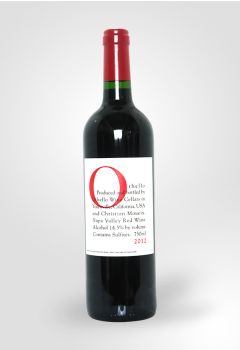-
- Origin
- USA
- California
- Napa Valley
This straw-coloured wine opens with a bright nose of citrus zest, young pineapple, waxy tropical flowers and freshly whipped cream with notes of almo... Read More- Origin
- USA
- California
- Napa Valley
This straw-coloured wine opens with a bright nose of citrus zest, young pineapple, waxy tropical flowers and freshly whipped cream with notes of almo... Read More -
- Origin
- USA
- California
- Napa Valley
Brroding and intense, it has a deep, rich ruby crimson colour in the glass. Aromas of red berry, black cherry and plum are followed by notes of bay le... Read More- Origin
- USA
- California
- Napa Valley
Brroding and intense, it has a deep, rich ruby crimson colour in the glass. Aromas of red berry, black cherry and plum are followed by notes of bay le... Read More -
- Origin
- USA
- California
Intense yet precise aromas of red fruit (raspberry and blackcurrant) complemented by notes of black pepper and laurel. The wine is supple and rich wit... Read More- Origin
- USA
- California
Intense yet precise aromas of red fruit (raspberry and blackcurrant) complemented by notes of black pepper and laurel. The wine is supple and rich wit... Read More -
- Origin
- USA
- California
- Napa Valley
Overture displays a vibrant garnet color with expressive aromas of fresh red fruits. Notes of bright cherry and red currant are underpinned by more ea... Read More- Origin
- USA
- California
- Napa Valley
Overture displays a vibrant garnet color with expressive aromas of fresh red fruits. Notes of bright cherry and red currant are underpinned by more ea... Read More -
- Origin
- USA ~ California
The epitome of sophistication and elegance in a wine. This gorgeous red from the Napa Valley is bursting with floral notes of violet, lavender and ros... Read More- Origin
- USA ~ California
The epitome of sophistication and elegance in a wine. This gorgeous red from the Napa Valley is bursting with floral notes of violet, lavender and ros... Read More
Grape Varieties
It also cultivates other grape varieties such as Chardonnay, Merlot, Pinot Noir, Sauvignon Blanc, Zinfandel, and more. Napa Valley is known for producing both red and white wines, but its reputation is particularly strong for red wines.
Microclimates
Napa Valley boasts a range of microclimates due to its diverse geography, which includes valleys, hills, and mountains. These microclimates provide unique growing conditions for different grape varieties, allowing winemakers to create a wide array of wine styles. Some areas, like the warmer Napa Valley floor, are ideal for Cabernet Sauvignon, while cooler regions like Carneros are known for Chardonnay and Pinot Noir.
Terroir
Napa Valley's terroir, which encompasses its soil, climate, and topography, plays a crucial role in shaping the characteristics of its wines. Winemakers carefully select specific vineyard sites to take advantage of the terroir and produce wines with distinct flavors and aromas.
Wineries
Napa Valley is home to hundreds of wineries, ranging from small, family-owned operations to large, well-known estates. Many of these wineries offer tours, tastings, and picturesque vineyard views to visitors.
Wine Styles
Napa Valley wines are celebrated for their bold, full-bodied, and rich characteristics, particularly when it comes to Cabernet Sauvignon. However, you can also find a wide range of styles, from elegant and complex to fruit-forward and approachable, depending on the winemaker's approach and the specific vineyard.
Appellations
Napa Valley is divided into several sub-appellations, each with its own unique characteristics. Some well-known appellations within Napa Valley include Stags Leap District, Oakville, Rutherford, and Howell Mountain. These sub-regions often have specific reputations for producing certain types of wine.







